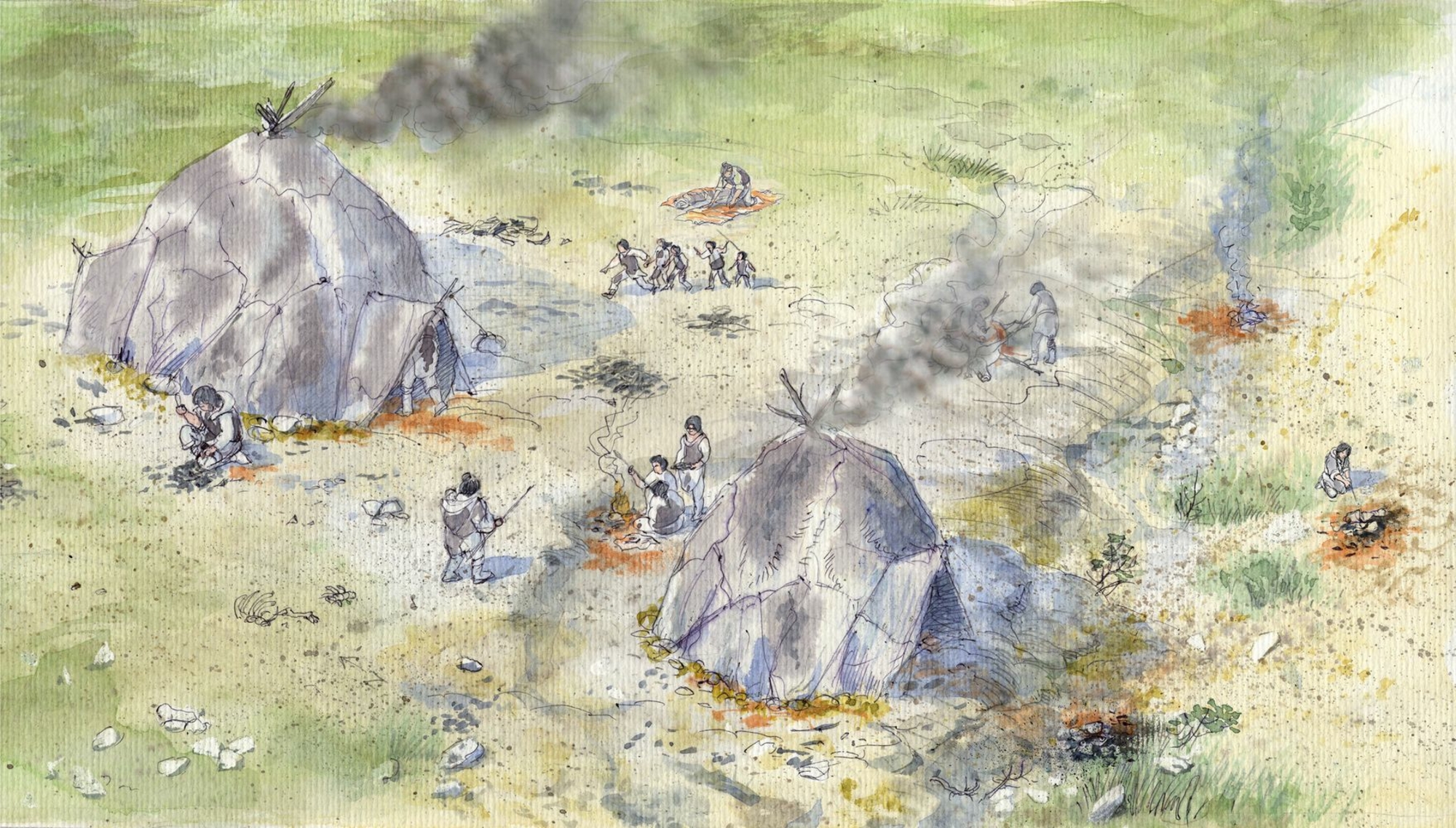
- Home
- The Magdalenians in their camps
- The camp of two related families
- Life inside the tents
The level of habitations U5 and P15, which was uncovered in the first sector of the excavations (locus 1), is one of the oldest at Étiolles. On the approximately 700 m2 area that has been excavated, there are two habitations with ancillary areas for activities organised around a hearth. By refitting flint it has been possible to confirm that these two habitations co-existed. These structures represent only one part of the camp, which must have been larger and whose entire surface area has not yet been excavated.
Close and singular tents
The two contemporaneous habitations U5 and P15, located near one another, stand out for the abundance of their remains and the relative complexity of their construction. The richest, U5, stands out for its complex stone architecture, arranged around a vast central hearth, covered in stones. A circle of large stone slabs marks the outline of the tent. Between these slabs and the hearth there are two perpendicular rows of small stones, confirming that walls divided up the interior space. While the hearth in habitation P15 is similar to that in U5, it is much simpler, with no stone arrangement and less flint.
A variety of indoor activities
In many of the known habitations belonging to the recent hunter-gatherers, the space is organised around the hearth, a highly social place. This was also the case at Étiolles, in particular in the U5 and P15 habitations. The family assembled around the central hearth for everyday tasks, including food preparation, flint knapping and working animal hides, and probably also during time spent on non-utilitarian activities which leave no material traces, such as conversation, games and rituals.
Besides this universal function, “domestic” hearths in U5 and P15 were not necessarily used for the same activities. Near the hearth in U5, long blades were produced and sagaie points were made and repaired. However, in P15, the quality of the blades that were knapped was much lower and the repair of hunting weapons negligeable.
In each habitation, the discovery of both clumsy and successful knappedflint side by side implies the presence of apprentice knappers, probably youngsters, alongside experienced adult knappers, hence confirming that the inhabitants were family units.


